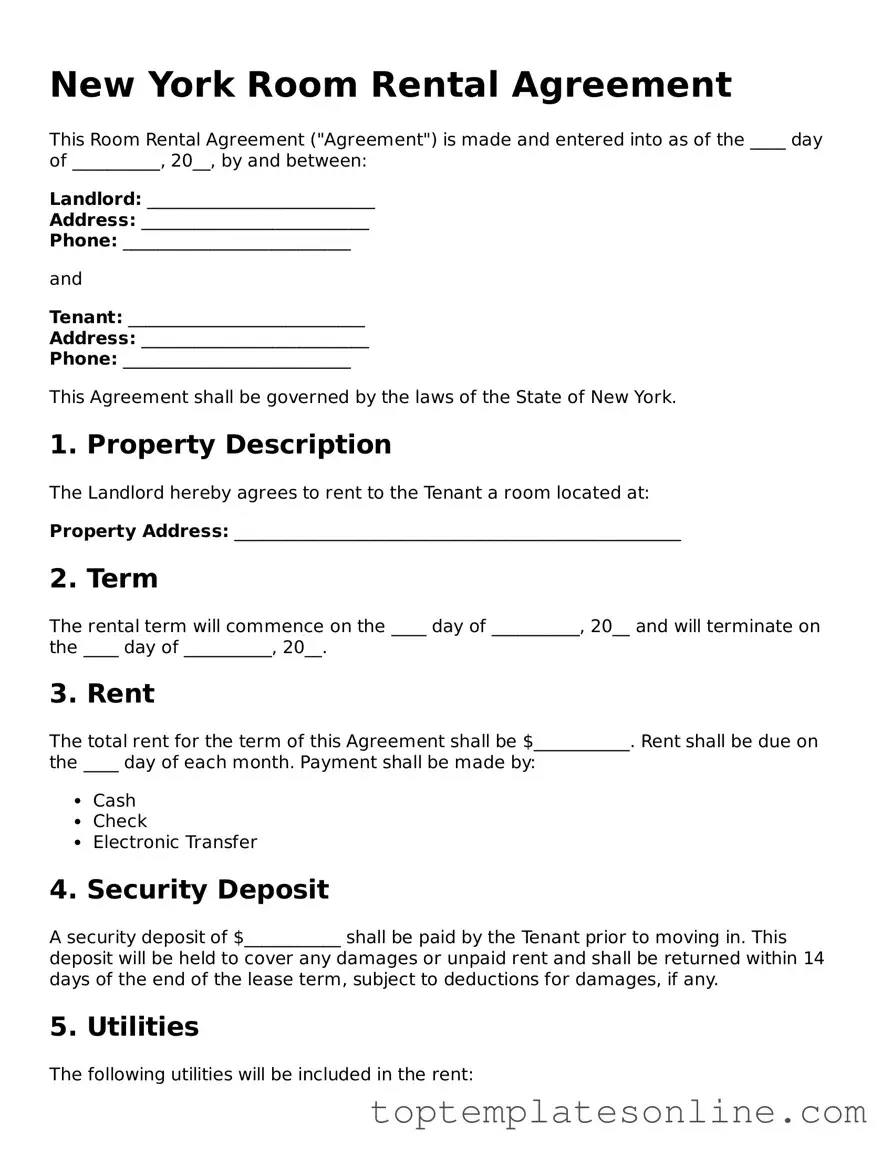Blank Room Rental Agreement Template for New York State
The New York Room Rental Agreement is a legal document that outlines the terms and conditions between a landlord and tenant for renting a room in a residential property. This agreement helps protect the rights of both parties while ensuring a clear understanding of responsibilities. Familiarizing yourself with this form is essential for a smooth rental experience in New York.
Customize Room Rental Agreement Here
